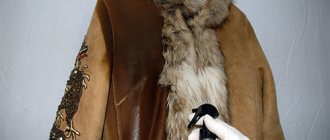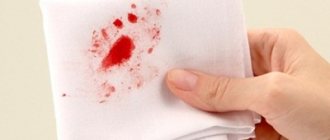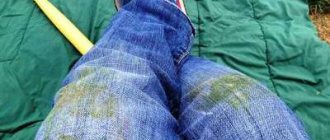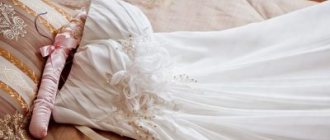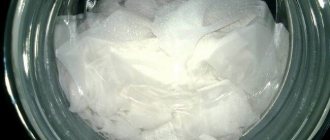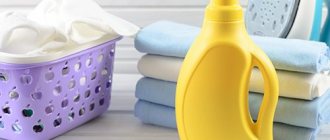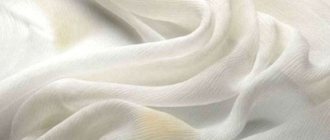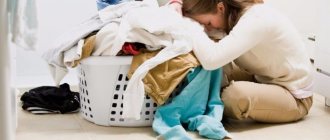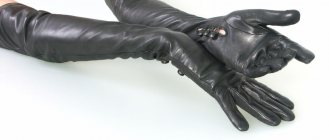Any person, when choosing a mattress, thinks, first of all, about its positive qualities and sleep comfort. Of course, the ability of the product to absorb dirt, dust and sweat is also important. But no matter what mattress you choose, sooner or later the time will come when you need to wash it. Even the most expensive mattress can get dirty, because situations in life are different. You can spill some liquid on it, get hurt and stain it with blood, drop a bottle of brilliant green, or drip grease. In this case, there is no need to panic, because any mattress can be washed if you choose the right product depending on the filling.
General recommendations for washing mattresses
Want to wash your mattress yourself? Please read the important rules. They will make the work easier, and it will give a good result:
- Regardless of the cleaning method you choose, vacuum the mattress to get more dust out of it, remove small crumbs, hair, and pet hair;
- Be sure to check the mattress manufacturer's labeling. It indicates acceptable care methods and technologies that cannot be used so as not to damage the mattress cover and filler;
- Test even the simplest cleaning agent on a small, inconspicuous area of the coating. Apply and leave for 5-7 minutes. Look to see if the textile structure is damaged, if the color has changed, or if there are any other defects. Only after this start working.
Do you want to calculate the cost of mattress dry cleaning? There is now a 30% discount for you!
The mattress consists of a filler, a mattress pad, and a removable cover. When buying expensive bedding, buy several covers for each change. Change them frequently so that the mattress:
- got dirty less;
- did not acquire the smell of stale laundry due to the absorbed secretions of the human body;
- it was easier to clean.
Preventing mattress contamination will save you from unnecessary financial costs. Buy a waterproof cover to protect against urine, blood, colored drinks, and vomit.
Try to wet the mattress less, because all the moisture will leak inside. Each filler reacts to moisture in a special way. If there is a smell of dampness, it means the mattress is damp due to improper care, leakage of urine, water, or drinks. The smell indicates the appearance of mold or mildew, which is dangerous for humans. Only professional dry cleaning of the mattress will help you get rid of them. In case of severe mold or fungus damage, the mattress will have to be thrown away.
IMPORTANT: when wet cleaning, do not use a detergent solution, but foam from it.
Prepare it yourself or buy a ready-made product - for example, Vanish active foam.
Should I go to dry cleaning?
Anyone who intends to clean a mattress is faced with a choice: take it to a dry cleaner or do it on their own at home.
The first option is preferable if there are strongly ingrained stains and a persistent unpleasant odor that cannot be dealt with using improvised means.
It is not recommended to try to remove particularly persistent traces with chemicals , which include urine, rust and other stains of biological origin.
This can lead to large stains on the fabric and increased odor. It is better to immediately contact the services of professionals, then there is a better chance of returning the mattress to its original cleanliness.
When the area of contamination is too large, and the lifespan of the mattress exceeds 5-6 years, then it is wiser to replace it with a new one.
In such a situation, even professional help may not help; it will only waste time and money. Orthopedic products are also difficult to clean, since they consist of several layers (in the middle there are springs or a latex plate, on the sides there is padding polyester, coconut, holofiber, foam rubber or a combination of different materials, on top there is a fabric cover).
This multi-layering causes the proliferation of pathogenic microorganisms inside. Dry cleaning will deal with this problem more efficiently.
Detergents and bleaches for mattresses
Detergents can have different formulas and contain components for disinfection, deodorization, and bleaching. Products containing active chlorine are suitable for caring for white mattresses. Stains and stains from colored mattress covers are removed with a stain remover.
Among the top three best household chemicals, I would like to name the following drugs:
- Amway.
- Dr. Beckmann, Frosch.
- Vanish.
IMPORTANT : manufacturers do not produce special products for the care of mattresses. You should look for them in the line of household chemicals for upholstered furniture, carpets, and textiles.
The packaging of the drug indicates the method of use and restrictions on use. Please read the information carefully before purchasing and using. Do not violate the mattress dry cleaning algorithm[/anchor] proposed by the chemical manufacturer. Test the product on a small area to protect the mattress from contact with the inappropriate product.
Cleaning removable elements
The removable elements of the mattress include covers that protect the structure from contamination. They, like bed linen, get dirty from human body fluids and careless use. They are removed, washed or dry cleaned.
There are general rules for caring for mattress covers:
- regular vacuuming and fresh air ventilation;
- wash in water not warmer than 40 degrees C;
- refusal of detergents with aggressive components. Use gels for washing children's clothes.
The care technology depends on the material from which the mattress cover is made. Products made of latex, polyurethane foam, and coconut coir are subject to dry cleaning. Washing parameters depend on the textile from which the cover is made. The main materials are thick cotton, linen, jacquard, membrane fabric.
How to wash a mattress cover
Washing can be:
- amateur and professional;
- at the client’s premises or with removal to the workshop;
- manual and machine;
- with standard or eco-friendly detergent.
How to wash a waterproof mattress cover
These covers are made from high-tech membrane fabric. Its peculiarity is that it is waterproof, but at the same time it breathes and does not float. It is erased:
- only by hand, without friction. Machine washing and mechanical stress destroy the porous structure of textiles;
- without chlorine-containing detergents. The ideal option is a delicate wash gel;
- without boiling - the water temperature should not exceed 40 degrees;
- with plenty of rinsing to eliminate detergent residues in the pores.
Excess moisture is removed by gentle hand squeezing without twisting. To dry, you can lay the mattress cover on a cotton cloth away from direct sunlight. No need to dry it on a radiator or with a hairdryer. It is recommended to treat a clean mattress cover with a special impregnation to protect the porous structure. Aerosol packaging of the drug allows you to do this quickly and economically.
How to wash a jacquard mattress cover
A jacquard cover is characterized by a special pattern, woven or stitched. It can be made of natural cotton, linen, synthetics. Manufacturers do not recommend washing them. On all products you will read the labeling - dry cleaning only. Follow manufacturers' directions .
How to wash a child's mattress cover
Since the child does not always control the fulfillment of physiological needs, a protective layer or cover made of membrane material is often used on children's mattresses. It keeps secretions out and protects against stains and odors.
Removable membrane elements should be washed more often to free the pores from dirt. Hand wash, temperature not higher than 40 degrees C, liquid detergent without bleach or conditioner. The cover is allowed to drain without squeezing, and dried on a line - in a vertical position in a straightened state.
How to wash an Ikea mattress cover
The manufacturer writes on the labels - dry cleaning only. But Russians are not used to retreating, so on the Internet there are tips from those who washed the cover and were satisfied with the result. Experts from CLEAN EVERYTHING recommend following the manufacturer's instructions on the mattress label. But, if you are willing to take the risk, we offer an algorithm that, according to its author, gave an acceptable result:
- the cover was washed in summer in water at 25 degrees C to avoid shrinkage;
- the main detergent is laundry soap, and hydrogen peroxide was used to remove blood stains from the mattress (this article has a section on removing blood);
- washed with a soft brush or sponge;
- washed the mattress in the bathtub. A wet case weighs several kilograms. Washing requires a lot of physical effort and time;
- drying on a strong rope or crossbar. The floor under the mattress cover should be washed in case a wet item suddenly slips or the rope breaks.
How to wash an Ascona mattress cover
A characteristic feature of Ascona mattresses is the Protect a bed cover, which can withstand two hundred washes. It is recommended to wash it in a machine or by hand. Water temperatures are not higher than 50 degrees C.
How to wash a mattress cover
Look at the product label. Is it possible to wash by hand or by machine? If yes, wash the mattress cover yourself or invite specialists from a specialized company.
Can a mattress cover be washed in a washing machine?
Modern washing machines cope with washing thick double bed covers. Follow the manufacturer's care instructions on the label.
At what temperature should you wash a mattress cover?
We recommend washing mattress covers at temperatures up to 40 degrees C. It is better to add washing gel without bleach and other additives directly to the drum.
Tips for caring for different types of products
The coconut filling inside the product is afraid of water, so do not rush to pour liquid on it or wring out napkins. You can only knock out the dirt by covering the surface with a damp sheet or towel. Cleaning with a damp sponge is also permitted.
Foam rubber and polyurethane foam products are also susceptible to wet processing. It is best to work with a slightly damp cloth or dry clean.
You should also not pour water on spring products, as excess moisture may cause the springs to rust and begin to creak. As for caring for orthopedic models, there are no special rules here. They, like ordinary products, need to be turned over periodically; it is enough to do this once every six months. The surface can be treated with a vacuum cleaner.
Complete washing of a mattress with lining
Washing a mattress with lining is a labor-intensive and ineffective measure. You need to rip open the seam and take out the filler (cotton wool or holofiber). The cotton wool will form clumps after washing, and holofiber, if not hidden in a tied laundry bag, will clog the machine. Washing it by hand is as hard as fluff from a pillow. In general, the game is clearly not worth the candle. We do not recommend embroidering the mattress. Either dry clean it or buy a new one.
Mattresses with zippers are easier to wash. Take out the filling, put it in a pillowcase, tie it tightly, put it in the machine, pour in washing gel, and select the delicate mode. You can dry it in the same bag, periodically turning on the hair dryer at medium temperature.
An orthopedic mattress with spring blocks, natural latex, and coconut coir cannot be washed. Wet surface cleaning of the mattress cover is the only option for amateur care. Deep dry cleaning of a mattress with spring blocks is only possible if it is taken to the workshop.
Washing a mattress without stitching
Most mattress manufacturers explicitly state on their labels that they are dry clean only. Wetting the multi-layer structure of a spring mattress means ruining it. Dampness inside the filler is unacceptable. Even a cotton mattress with synthetic filling requires high-quality drying near a radiator or outside in the summer. You can wash it without embroidering it. For this:
- place the mattress in a bathtub filled with cleaning solution for 20 minutes to soak;
- drain the dirty solution;
- pour a new portion of soapy water, remember the mattress well with your hands;
- rinse repeatedly, changing the water until it becomes clear and clean;
- figure out how to let the water drain into the bathtub;
- dry.
How to get rid of an unpleasant odor?
Even after cleaning and removing stains, the mattress sometimes produces an unpleasant odor. To finally get rid of it, the following methods are recommended:
- treat the fabric with vinegar solution (1:1);
- wipe the mattress with ammonia;
- Mix a tablespoon of bleaching washing powder, 100 g of soda and a liter of water, then spray this solution over the fabric.
Choose any of the listed options, then sprinkle the fabric with soda and after 20-30 minutes of exposure, go over the surface of the mattress with a vacuum cleaner.
You can buy ready-made odor absorbers in the store. They are scattered over the surface of the product and after 3-4 hours of exposure they are removed with a vacuum cleaner.
Can the mattress be washed?
Look for the answer to your question on the mattress label. Most likely, the manufacturer considers only dry cleaning acceptable. Do you want to take a risk? When starting to wet clean a mattress, be prepared to bear responsibility for any violation of care technology.
How to wash a Dormeo mattress
Washing Dormeo mattresses is prohibited. Liquid household detergents and ironing will cause irreparable harm to the materials used in the production of brand products. Home care includes regular cleaning with a regular vacuum cleaner.
How to wash a children's mattress
You can wash a foam mattress or one filled with holofiber (synthetic wool) in a bathtub or washing machine. Use a hypoallergenic liquid detergent for washing children's clothes. Repeated rinsing, gentle spinning, and flat drying are necessary.
How to wash a coconut mattress
Forums for parents describe options for washing a coconut mattress. It is suggested to remove and wash the mattress cover, and air the coconut filling on the balcony in the shade. Quite complicated and time-consuming, right?
What do we have to do:
- vacuum regularly;
- use a waterproof mattress cover;
- at least once every 2 years, take the mattress to the dry cleaner or call specialists from a specialized company to your home.
You can only wash the mattress cover, by hand or in the machine on a delicate cycle.
How to wash a spring mattress
Mattresses with dependent and independent spring blocks do not need to be washed. Vacuum cleaning, wet cleaning, hand or machine washing of the mattress cover - these are three options for amateur care of orthopedic spring mattresses. Be careful not to wet the litter. If the filling becomes moldy (except for the springs, there are several layers of insulation and textiles), then the mattress will be damaged.
How to wash a cotton mattress
You can wash a mattress with synthetic wool. This method is not suitable for cotton wool. Unless, of course, you are going to unstitch the mattress, wash the cover separately, and leave the cotton as is. However, the filler absorbs odors and absorbs all dirt, so washing the cover with dirty filler will not radically improve the situation.
Mattress with cotton wool
We do not recommend washing a mattress with natural cotton wool. Take a piece of cotton wool, wet it and dry it. You will see what happens to it, and you will understand that filling a cotton mattress after washing will never be the same. The cotton wool will form clumps and it will become unsuitable for sleeping.
Foam rubber
It is better to wash a mattress with foam filling by hand in the bathtub. Then you should rinse it thoroughly so that there is no detergent left in the pores of the foam rubber and you do not breathe in fumes from household chemicals. After rinsing, place the mattress upright in the bathtub against the wall to allow water to drain out of it. Dry it on the balcony or in the yard in the shade.
How to wash an orthopedic mattress
The markings on the orthopedic mattress say unequivocally - dry cleaning only. This means that the manufacturer does not recommend using any water-based technologies (solution, foam, steam) to care for the product. Only the replacement cover can be washed by machine or by hand. Use a liquid product without bleach.
Woolen
It is recommended to dry clean a mattress with a wool filling. Natural wool, in principle, cannot withstand contact with water, this applies to any product. If you nevertheless decide to wash a mattress with wool filling, then:
- the water temperature should not exceed 30 degrees C;
- use a mild hypoallergenic liquid detergent for delicate washing;
- Dry the washed item away from heat sources to avoid shrinkage.
Holofiber
Synthetic wool made from spiral-shaped hollow polyester fibers retains volume due to its structural features, does not wrinkle when washed, and does not bunch up. The mattress can be washed by hand or in a machine (depending on the drum capacity and product size).
Important terms:
- temperature up to 40 degrees C;
- wash in shampoo or gel for delicate textiles, which are easier to rinse than powder;
- push-ups without twisting;
- delicate ironing when the iron is heated to 100 degrees C.
IMPORTANT : read the label before washing. Perhaps the manufacturer indicated special conditions for caring for the fabric of the cover.
What materials are they made from?
When choosing a method for cleaning a mattress, you should first of all focus on the type of filler.
Small items (for example, for a crib) made from holofiber or bamboo can be washed in a washing machine without any problems. But foam and cotton mattresses are washed by hand.
Dry cleaning is recommended for the following types:
- spring;
- with coconut filling;
- orthopedic.
For other products, dry processing is needed as a preventive measure to preserve freshness.
Frequent pollution
The most common contaminants in mattresses are human and pet urine, sweat, blood, colored drinks, and vomit. To remove stains, household chemicals and traditional methods are used.
How to remove blood from a mattress
Fresh blood is removed with a well-wrung out damp cloth. You can rub it with laundry soap. An old bloody stain should be soaked by placing a damp cloth on it for 30 minutes. Then moisten the stain with hydrogen peroxide. Remove the brown foam that forms when blood reacts with peroxide with paper towels until the stain disappears.
How to wash urine from a mattress
A fresh stain should be blotted with a paper towel. Next, mix an equal amount of vinegar and water and wipe the stain with the solution. A good result is obtained by combining 80 ml of hydrogen peroxide with 1 tbsp. a spoonful of baking soda and a couple of drops of dishwashing detergent. Mix the ingredients in a spray bottle, shake well, and spray the stained area. Rub with a sponge, wipe with a damp cloth, dry the mattress.
How to wash cat urine from a mattress
The algorithm for cleaning a mattress is as follows:
- blot the stain with paper towels, let them absorb as much of the ammonia-smelling liquid as possible;
- prepare an aqueous solution of vinegar (1:1) or hydrogen peroxide (1:1). It is recommended to add 1 teaspoon of dishwashing gel to the second solution;
- Apply the cleaning solution to the stain with a sponge (microfiber cloth), leave for 15 minutes;
- collect the cleaning product with a clean damp cloth, wipe the area with a damp cloth, blot with a paper towel, and let dry naturally.
How to wash a mattress from baby urine
Urine from a baby up to one year old can be removed with a damp cloth and laundry soap. Older children's urine stains can be removed in the same way as adult urine stains. We wrote about this a little higher in this publication.
How to clean vomit from a mattress
Use a garbage scoop to remove the vomit. Wash the stained area with a solution of vinegar and water (1:1), wash with Vanish or laundry soap. To remove the odor, sprinkle the washed area with baking soda powder and leave for 8-12 hours, after which it is collected with a vacuum cleaner. Wipe the area where the stain was with a clean damp cloth.
How to remove stains from a mattress
After amateur cleaning of stains of blood, urine, vomit, and colored drinks, stains often remain on the mattress cover. You can remove them by calling a dry cleaner from a specialized company. Professional technologies restore neatness to mattress covers.
What can I use to clean it?
Household foaming gels, sprays and dry foam will help effectively rid your mattress of dust and dirt. Stain removers and various concentrated cleaning products for carpets and upholstered furniture also work well on fabric stains.
The most popular household chemicals suitable for cleaning mattresses:
- Vanish, Shine, Cinderella, Selena - sprays.
- Vanish – active foam, powder.
- Nordland - foam.
- Antipyatin - soap.
- Dr. Beckmann - gel.
- Udalix, MienLiebe – stain remover pencil.
- Just a minute, Cinderella – cream.
If preference is given to traditional methods of cleansing, then you can use the following available means:
- laundry soap;
- 3% hydrogen peroxide;
- pure alcohol;
- solvent or acetone;
- soda;
- salt;
- vinegar;
- borax;
- glycerol;
- ammonia.
If you intend to freshen a children's mattress, you need to select an odorless product and thoroughly rinse it with a damp cloth or vacuum cleaner.
Before choosing how to clean a mattress, you should determine the nature of the contamination.
